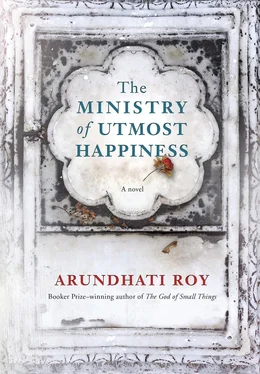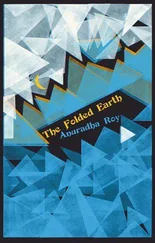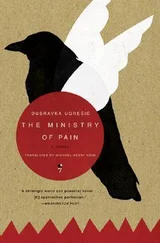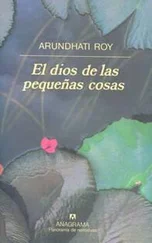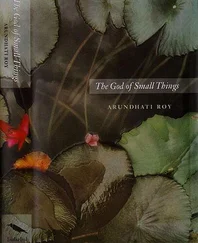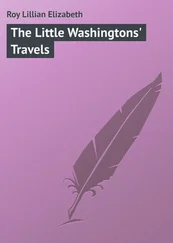A dozen hefty men in civil clothes but with uncivil haircuts (short back and sides) and uncivil socks and shoes (khaki socks, brown boots) had distributed themselves among the crowd, blatantly eavesdropping on conversations. Some of them pretended to be journalists and filmed conversations with small Handycams. They paid special attention to the young foreigners (many of whom would soon find their visas revoked).
The TV lights made the hot air hotter. Suicidal moths bombed the sun guns and the night smelled of charred insect. Fifteen severely disabled people, sullen and tired from a long, hot day’s begging, hovered in the dark, just outside the circle of lights, resting their buckled backs and wasted limbs on government-issue, hand-operated cycle rickshaws. The displaced farmers and their famous leader had displaced them from the coolest, shadiest stretch of pavement where they usually lived. So their sympathies were entirely with the petrochemicals industry. They wanted the farmers’ agitation to end as soon as possible so they could have their spot back.
Some distance away a bare-torsoed man, with yellow limes stuck all over his body with superglue, sucked noisily on a thick mango drink from a small carton. He refused to say why he had stuck limes to his skin or why he was drinking mango juice even though he seemed to be promoting limes, and grew abusive if anyone asked. Another freelancer, who called himself a “performance artist,” wandered aimfully through the crowds wearing a suit and tie and an English bowler hat. From a distance his suit looked as though it had seekh kebabs printed all over it, but on closer inspection they turned out to be perfectly shaped turds. The wilted red rose pinned to his collar had turned black. A triangle of white handkerchief peeped out of his breast pocket. When asked what his message was, in refreshing contrast to the rudeness of the Lime Man, he patiently explained that his body was his instrument and he wanted the so-called civilized world to lose its aversion to shit and accept that shit was just processed food. And vice versa. He also explained that he wanted to take Art out of Museums and bring it to “The People.”
Sitting near the Lime Man (who ignored them completely) were Anjum, Saddam Hussain and Ustad Hameed. With them was a striking-looking young Hijra, Ishrat, a guest at Jannat Guest House who was visiting from Indore. Of course it had been Anjum’s idea — her long-standing desire to “help the poor”—which made her suggest they go to Jantar Mantar to see for themselves what the “Second Freedom Struggle” the TV channels had been broadcasting was all about. Saddam was dismissive: “You don’t have to go all the way there to find out. I can tell you now — it’s the motherfucker of all scams.” But Anjum had been adamant and of course Saddam would not let her go alone. So they made up a little party, Anjum, Saddam (still in his sunglasses) and Nimmo Gorakhpuri. Ustad Hameed, who had dropped in to see Anjum, was dragooned into the expedition, as was young Ishrat. They decided to go at night when the crowds would be comparatively thinner. Anjum had dressed down, in one of her drabber Pathan suits, though she could not resist a hairclip, a dupatta and a touch of lipstick. Ishrat was dressed as though she was at her own wedding — in a lurid pink kurta with sequins and a green Patiala salwar. She ignored all advice to the contrary and wore bright pink lipstick and enough jewelry to light up the night. Nimmo had driven Anjum, Ishrat and Ustad Hameed in her car. Saddam had arranged to meet them there. He rode Payal to Jantar Mantar and tethered her to a railing some distance away (and promised a cheeky little shoe-shine boy two choco-bars and ten rupees to keep an eye on her). Sensing Nimmo Gorakhpuri’s restlessness, Saddam had tried to entertain her with the animal videos he had on his phone — some that he had shot himself, of the stray dogs and cats and cows he came across on his daily treks across the city, and others he had received from friends on WhatsApp: See, this fellow is called Chaddha Sahib. He never barks. Every day at 4 p.m. sharp he comes to this park to play with his girlfriend. This cow loves tomatoes. I take her some every day. This one has a bad case of itching. Have you seen this lion standing on two legs and kissing this woman…? Yes, she’s a woman. You can tell when she turns around… Since none of them featured goats or Western women’s fashion, they did nothing to alleviate Nimmo Gorakhpuri’s boredom and she soon excused herself and left. Anjum on the other hand was fascinated by the bustle, the banners and the bits of conversation she overheard. She insisted they stay on and “learn something.” So, like everybody else on the pavement, they settled into their own little huddle. Headquartered there, Anjum sent her envoy — His Excellency, Plenipotentiary, Saddam Hussain — from group to group to get a quick low-down on where they were from, what their protest was about and what their demands were. Saddam went obediently from stall to stall like a shopper in a political flea market, returning every now and then to brief Anjum about the insights he had gained. She sat cross-legged on the ground, leaning forward and listening intently, nodding, half smiling, but not looking at Saddam as he spoke because her head was turned and her shining eyes were fixed firmly on whichever group it was that he was talking about. Ustad Hameed was not remotely interested in the information Saddam brought. But the expedition was a welcome change from his daily routine so he was content to be part of it and hummed to himself as he looked around absent-mindedly. Ishrat, inappropriately dressed and absurdly vain, spent all her time taking selfies from various angles with different backgrounds. Though nobody paid much attention to her (it was a No-contest between her and the old man — baby) she was careful not to stray too far from base camp. At one point she and Ustad Hameed dissolved into a spasm of schoolgirl giggles. When Anjum asked what was so funny, Ustad Hameed told her how his grandchildren had tutored their grandmother to call him (her husband) a “bloody fucking bitch,” which she had been given to understand was a term of endearment in English.
“She had no idea what she was saying, she looked so sweet when she said it,” Ustad Hameed said, laughing. “Bloody fucking bitch! That’s what my begum calls me…”
“What does it mean?” Anjum asked. (She knew what the English word “bitch” meant, but not “bloody” and “fucking.”) Before Ustad Hameed could begin to explain (although even he wasn’t all that sure himself, he just knew it was bad), they were interrupted by a long-haired, bearded young man in floaty, shabby clothes and an equally shabbily dressed girl with gorgeous, wild hair that she wore loose. They were making a documentary film about Protest and Resistance, they explained, and one of the recurring themes of the film was to have protesters say, “Another World Is Possible” in whatever language they spoke. For example, if their mother tongue was Hindi or Urdu, they could say, “Doosri duniya mumkin hai…” They set up their camera while they were talking and asked Anjum to look straight into the lens when she spoke. They had no idea what “Duniya” meant in Anjum’s lexicon. Anjum, for her part, completely uncomprehending, stared into the camera. “Hum doosri Duniya se aaye hain,” she explained helpfully, which meant: We’ve come from there…from the other world.
The young film-makers, who had a long night’s work ahead of them, exchanged glances and decided to move on rather than try to explain what they meant because it would take too long. They thanked Anjum and crossed the road to the opposite pavement where several groups had their own separate canopies.
In the first, seven men with shaved heads, dressed in white dhotis, had taken a vow of silence, claiming they would not speak until Hindi was declared India’s national language — its official mother tongue — over the twenty-two other official languages and hundreds of unofficial ones. Three of the bald men were asleep and the other four had slipped down their white hospital masks (their “vow of silence” prop) in order to drink their late-night tea. Since they could not speak, the film-makers gave them a small poster that said Another World Is Possible to hold up. They made sure that the banner with the demand for Hindi to be declared the national language was out of frame, because both film-makers agreed it was a somewhat regressive demand. But they felt that bald men with masks provided good visual texture for their film, and ought not to be passed over.
Читать дальше
